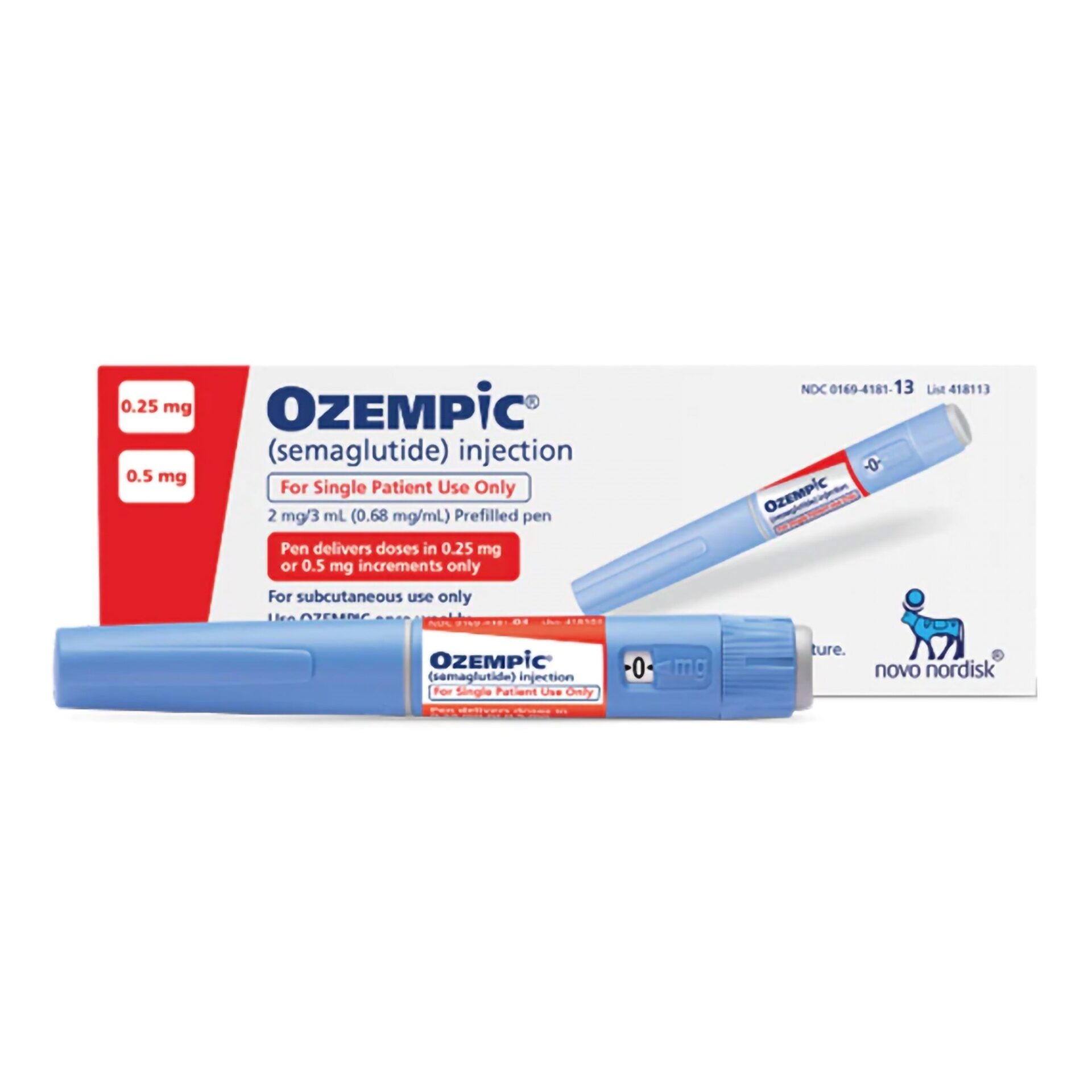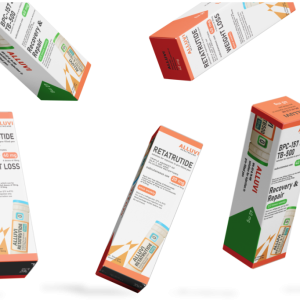Description
Buy Ozempic Online
Buy ozempic online from Weight Loss Meds without prescription with fast and secured delivery worldwide. Ozempic is used for type 2 diabetes to improve blood sugar levels and lower the risk of stroke, heart attack, or death for adults with type 2 diabetes and heart disease. Ozempic for weight loss has been shown to be effective in clinical trials. Ozempic is given as a once-weekly injection under the skin of the belly, the thigh, or the upper arm using an autoinjector (pen). ozempic buy online
Uses Of Ozempic
What is Ozempic?
Ozempic (semaglutide) is a prescription medication used for adults with type 2 diabetes to lower their blood sugar levels (A1C). It is also used to reduce the risk of kidney function decline in diabetics with chronic kidney disease (CKD) and lower the risk of heart attack or stroke in certain patients with type 2 diabetes and heart disease.
Ozempic has been shown to help weight loss and maintain weight loss in clinical trials.
Ozempic works by increasing insulin release, slowing stomach emptying, and reducing sugar production by the liver, which results in improved blood sugar levels, prolonged fullness, and controlled appetite, which may lead to weight loss.
Ozempic mimics a natural hormone called GLP-1, which is released when we eat to help balance blood sugar and make us feel full after meals. Ozempic is from a class of medicines called GLP-1 agonists.
Side Effects Of Ozempic
What are the most common side effects of Ozempic?
The most common side effects of Ozempic are listed below. Tell your healthcare provider if you have any of these side effects that bother you.
- Nausea
- Vomiting
- Diarrhea
- Stomach pain
- Constipation
There may be other side effects of Ozempic that are not listed here. Contact your healthcare provider if you think you are having a side effect of a medicine. In the U.S., you can report side effects to the FDA at www.fda.gov/medwatch or by calling 800-FDA-1088. In Canada, you can report side effects to Health Canada at www.health.gc.ca/medeffect or by calling 866-234-2345.
What are the serious side effects of Ozempic?
While less common, the most serious side effects of Ozempic are described below, along with what to do if they happen.
Severe Allergic Reactions. Ozempic may cause allergic reactions, which can be serious. Stop using Ozempic and get help right away if you have any of the following symptoms of a serious allergic reaction.
- Breathing problems or wheezing
- Racing heart
- Fever or general ill feeling
- Swollen lymph nodes
- Swelling of the face, lips, mouth, tongue, or throat
- Trouble swallowing or throat tightness
- Itching, skin rash, or pale red bumps on the skin called hives
- Nausea or vomiting
- Dizziness, feeling lightheaded, or fainting
- Stomach cramps
- Joint pain
Pancreatitis. Ozempic may cause inflammation of the pancreas, which is called pancreatitis. Stop using Ozempic and call your healthcare provider right away if you have symptoms of pancreatitis including vomiting or severe pain in the upper part of your belly that travels to your back.
Low Blood Sugar (Hypoglycemia). Ozempic may cause low blood sugar (hypoglycemia), usually when used with a sulfonylurea (glimepiride, glyburide, glipizide) or insulin, which can be serious and may lead to death. You may need to check your blood sugar more often if you have changes to your diet, exercise regimen, or medicines for diabetes. Stop using Ozempic and call your healthcare provider right away if you have any of the following symptoms of hypoglycemia.
- Headache
- Crankiness or anxiety
- Hunger
- Dizziness, or confusion, or drowsiness
- Blurry vision
- Slurred speech
- Sweating
- Feeling jittery or shakiness
- Fast heartbeat
- Weakness
Thyroid Tumors. Ozempic may cause thyroid tumors, including a type of cancer called medullary thyroid carcinoma (MTC). Stop using Ozempic and call your healthcare provider right away if you have symptoms of medullary thyroid carcinoma including swelling or a lump in the neck, trouble swallowing, shortness of breath, or hoarseness. Buy Ozempic Online without prescription
Vision Changes. Ozempic may cause your vision to worsen when you start using the medicine or start a higher dose. Tell your healthcare provider if you develop new vision problems. If you have a condition called diabetic retinopathy, your vision may temporarily worsen when you start Ozempic or a higher dose. Make sure that you keep all appointments to have your vision checked.
Kidney Damage. Kidney damage can happen when using Ozempic, especially if you have nausea, vomiting, or diarrhea, which can cause dehydration. Try to drink water to avoid dehydration. Call your healthcare provider right away if you have any of the following symptoms of kidney damage.
- Reduced need to pee
- Swelling in your feet, ankles, or legs
- Weakness or unusual tiredness
- Difficulty catching your breath or chest pain/pressure
- Confusion
- Nausea
- Seizures
Severe Stomach Problems. Ozempic may cause severe stomach problems. Call your healthcare provider right away if you have any of the following symptoms that are severe or will not go away.
- Nausea, vomiting, or constipation
- Feeling bloated or full sooner than usual when eating
- Stomach pain or cramps
Gallbladder Problems. Using Ozempic can cause gallbladder problems, including cholecystitis and cholelithiasis, which is also known as gallstones. Call your healthcare provider right away if you have any of the following symptoms.
- Fever
- Your skin or the whites of your eyes turning yellowish in color (also called jaundice)
- Pain in your upper stomach area
- Stool (poop) that is clay-colored
Ozempic dosing information
Ozempic is given as a once-weekly injection under the skin (subcutaneous injection), using an autoinjector (pen).
Ozempic should be started at a low dose to reduce the risk of gastrointestinal side effects.
Ozempic dose for blood sugar control (glycemic control)
- Weeks 1 through 4: 0.25 mg dose 1 time a week.
- Weeks 5 through 8: 0.5 mg dose 1 time a week.
- If additional glycemic control is needed, increase the dosage to 1 mg once weekly after at least 4 weeks on the 0.5 mg dose.
- If additional glycemic control is needed, increase the dosage to 2 mg once weekly after at least 4 weeks on the 1 mg dosage.
Ozempic dose to reduce eGFR decline, end-stage kidney disease and cardiovascular death
- Weeks 1 through 4: 0.25 mg dose 1 time a week.
- Weeks 5 through 8: 0.5 mg dose 1 time a week.
- Increase the dosage to 1 mg once weekly after at least 4 weeks on the 0.5 mg dosage.
Maximum dosage
- Do not exceed 2 mg injected one time a week.
Usual maintenance dosage
- 0.5 mg, 1mg or 2 mg injected one time a week.





